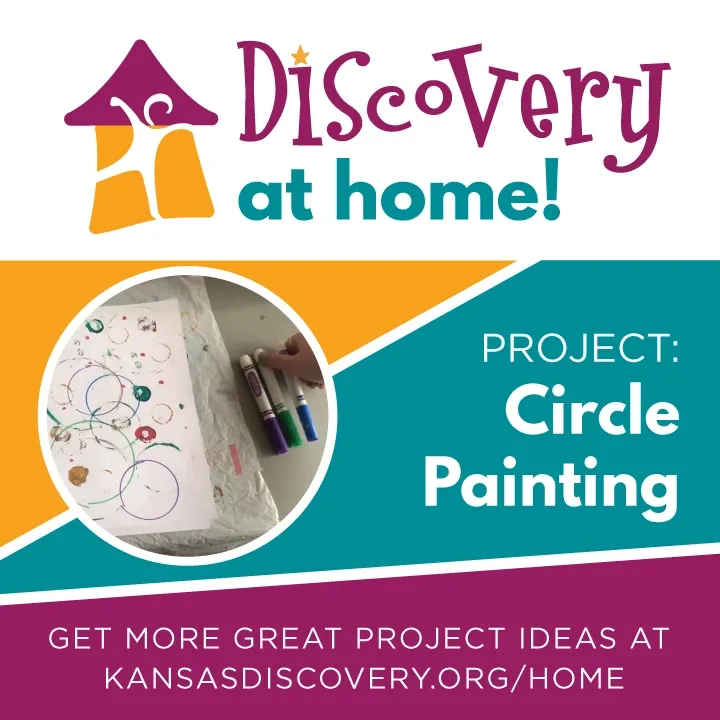Circular logic!
Check out a circle process painting with Sarina Smith from the Kansas Children’s Discovery Center. Sarina is an Art Studio major at Washburn University and loves doing art projects with kids at the museum! What do kids learn by creating this art? Spatial or visual thinking. Being able to imagine the positions of objects and how they interact is an important skill for learning math. Putting an object in paint and seeing how that object contacts the paper is a great way to develop spatial thinking skills.v

Materials Needed:
- Circular items: lids, bottle caps, water bottles, cans, egg cartons, cotton swabs
- Paints (tempera or acrylic works best)
- Paper
- Paper plate
Directions:
- Collect circular items like lids, bottle caps, cotton swabs, or other rounded items around the house.
- Put desired paints on a paper plate or pallette
- Press different materials into the paint and press them on the paper
How to Expand it:
- Once dry, use markers to outline your different materials on top of your painting to add more circles, or create a new design on top of your circles.
- Try to count how many circles end up on the page.
- See if you can make other shapes when adding circles together, or if overlapping circles create new shapes.
What do kids learn?
- Spatial or visual thinking. Being able to imagine the positions of objects and how they interact is an important skill for learning math. Putting an object in paint and seeing how that object contacts the paper is a great way to develop spatial thinking skills.
- Fine motor skills. Kids practice using the small muscles in their hands later used for writing.
- Art can be made with unconventional materials. You don’t need a paintbrush to paint! Using diverse materials for art encourages creativity and imagination.
- Art Vocabulary:
- Geometric shape – a circle is a geometric shape that is made by drawing a curve that always has the same distance from the point at the middle.